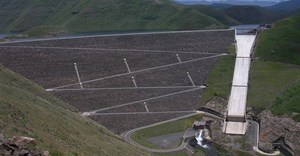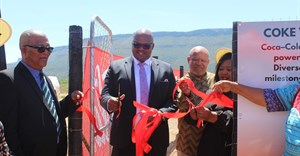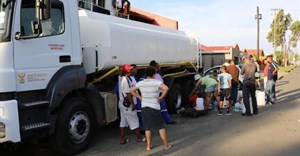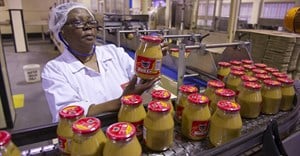Trending

 East Africa internet disrupted by another major undersea cable cutLindsey Schutters
East Africa internet disrupted by another major undersea cable cutLindsey Schutters First of its kind MACC Fund to raise R10.2bn to transform creative industryDanette Breitenbach
First of its kind MACC Fund to raise R10.2bn to transform creative industryDanette Breitenbach


Elections 2024
Working for Water projects critical for EC water supply
Implemented across the Eastern Cape by Gamtoos Irrigation Board (GIB) and funded by the national Department of Environmental Affairs (DEA), the WfW projects focus chiefly on alien vegetation clearance and wetlands rehabilitation, while providing much-needed employment opportunities in rural communities.

According to GIB’s area manager for the western region, Edwill Moore, although there is not enough scientifically verifiable data to support claims of increased water flow, anecdotal evidence suggests a major improvement as a result of clearing activities. “Numerous landowners will testify that after their property was cleared and maintained, the water flow increased dramatically, even during very dry periods,” said Moore.
First rolled out by GIB in 1999, the Kouga and Kromme River projects, in particular, are among the oldest in the DEA’s Working for Water programme. However, their role in increasing the flow to the Kouga, Churchill and Impofu dams has become even more critical as water levels reach crisis point.
Clearing alien vegetation improving water flow
In the Kouga catchment area, Moore said their primary focus was on alien vegetation clearing, with 12 teams from local communities – comprising 14 members each – working to clear mainly Black Wattle (90% of the workload), Pine, Eucalyptus, Hakea and other less common species. The 282,000-hectare project extends from Haarlem in the west to Kouga Dam in the east, with the Kouga and Tsitsikamma mountains forming the northern and southern boundary respectively.
“To put it in perspective, that’s around 564,000 rugby fields,” explained Moore.
“The water from this catchment area flows into the Kouga Dam, which supplies irrigation water to farmers in the Gamtoos Valley and is also the main water supply dam to the Nelson Mandela Bay Municipality.”
Ensuring the proper functioning of wetlands
Running parallel to the Kouga project, from The Heights in the west to Churchill Dam in the east, is the 40,000-hectare Kromme River project area, where GIB manages both alien vegetation clearing and wetlands rehabilitation projects. The water from this catchment flows into the Churchill and Impofu dams, which also supply Nelson Mandela Bay.
Although significantly smaller in area than Kouga, the Kromme workload was higher, with 13 teams of 14 working to clear vegetation, said Moore.
“The vision of the wetlands project is to facilitate the protection, conservation, and rehabilitation of the degraded peat wetlands in the Kromme River System. Peat has the capacity to store up to 20 times its weight in water, which allows water to remain in the wetlands system for longer.”
Moore explained that a slower release of water and consequent slowdown of run-off would allow sediment to settle more effectively, leading to a cleaner in-flow of water into the Churchill Dam. “If the wetlands aren’t functioning properly, the water will just flow at a high rate, cost a lot more to purify and there will not be a constant flow of water into the dam,” he added. To this end, he said GIB’s three wetlands teams made it their priority to stop ongoing degradation and erosion by constructing various structures, such as gabions and concrete weirs, to prevent active head cuts from affecting the course and flow of the river.

“During a major flood in 1996, 1.5km of wetland was destroyed due to an active head cut. In 2000, we constructed a combined concrete and gabion weir to stop the head cut and prevent further erosion. Since then, there have been two major floods, and not even a metre of wetland was lost.”
Landowners buying in
Moore said it had initially been challenging to get buy-in from local landowners but that the long-term successes and benefits had instilled confidence and opened the door to greater cooperation.
“Over the past year, in both the Kouga and Kromme projects, it has been exciting to see these landowners being prepared to contribute to the cost of clearing operations, and we plan to build on this,” he said.
“The drought has naturally played a role. Currently, we can’t address all the requests we get for clearing but we are pleased to be working together.”










